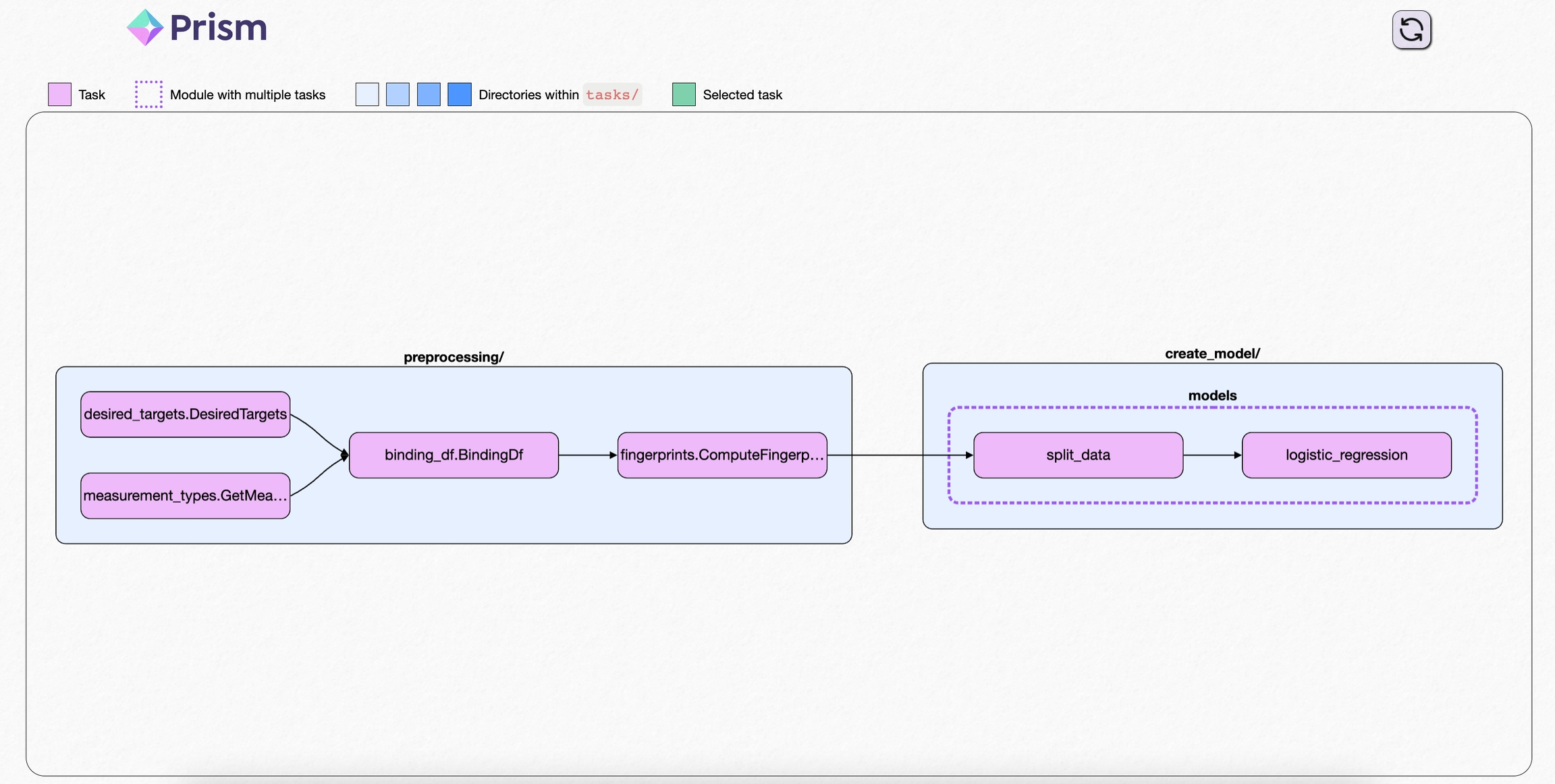graph
Usage
prism graph is used to render your project as a series of nodes and edges (i.e., a graph) and launch an interactive UI for visualizing this graph.
Usage: prism graph [OPTIONS]
Launch the Prism Visualizer UI to view your project as a graph. This is the CLI equivalent of calling
PrismProject.graph(...) in your Python script.
╭─ Options ────────────────────────────────────────────────────────────────────────────────────────────────────────╮
│ --project-id TEXT Project ID. │
│ --project-name TEXT Project name. │
│ --project-version TEXT Project version. │
│ * --tasks-dir TEXT Directory containing tasks. Default is the │
│ "tasks" folder in the current directory. │
│ [required] │
│ --port -p INTEGER Port used by the webserver for launching the UI. │
│ Default is 8000. │
│ --open-window Open the visualizer UI in a new window in your │
│ default web browswer. │
│ --hot-reload Update the project's graph after each local │
│ change │
│ --log-level -l [info|warning|error|debug|critical] Set the log level │
│ --help Show this message and exit. │
╰──────────────────────────────────────────────────────────────────────────────────────────────────────────────────╯The CLI arguments are largely the same as the arguments used to instantiate the PrismProject and call the PrismProject.graph()method. However, note that the CLI command ignores connectors, callbacks, concurrency, and package_lookups. These inputs do not affect the graph command's behavior.
Example
Here's what an example project looks like:

Last updated